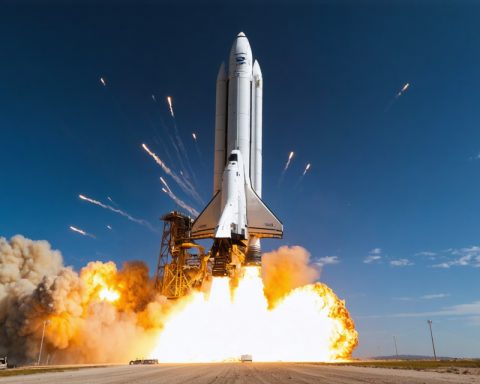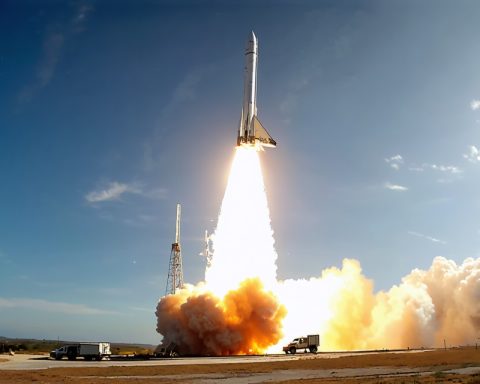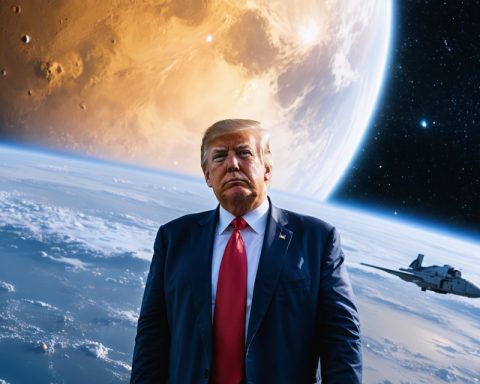In an electrifying return to office, President Donald Trump has been inaugurated once more. His first term saw significant advancements in space policy, including the launch of the Artemis Accords and the establishment of the Space Force. As the second term unfolds, observers eagerly discuss potential developments in space initiatives.
Key Appointments and Leadership
Elon Musk has been designated to spearhead the Department of Government Efficiency (DOGE). His role raises questions about how his extensive financial ties to government contracts might influence fiscal policies. Industry experts speculate whether his push for reduced government spending will affect his interests in advancing space technology.
Jared Isaacman, a notable entrepreneur and space traveler, has been selected as the new NASA administrator. His experience with SpaceX missions positions him well to lead the agency into its next chapter. Additionally, Trump has nominated Troy Meink for Secretary of the Air Force, overseeing the future of the Space Force. Other significant appointments include former Rep. Mike Waltz as national security adviser, focused on bolstering U.S. space capabilities.
Space Policy Outlook
Anticipation surrounds how Trump’s administration may shift U.S. cooperation with international allies on space matters, particularly in response to fears of an “America First” strategy. A strong bipartisan commitment to space weather initiatives is projected, with new efforts to improve military readiness against space weather threats expected.
As the future unfolds, industry leaders are passionately voicing their thoughts on maintaining a robust space agenda, amid concerns over NASA’s direction and the broader implications for American space leadership.
The Broader Implications of Trump’s Space Policy Agenda
The implications of President Trump’s renewed commitment to space initiatives could resonate beyond the confines of national policy, potentially reshaping society, culture, and global economics. As the U.S. solidifies its position as a leader in space exploration, the ripple effects could bolster international collaborations while simultaneously fostering a new era of space diplomacy. The Artemis Accords, aimed at establishing norms for lunar exploration, may attract an array of global partners and inspire a collective approach to extraterrestrial governance, portraying the U.S. as a beacon of innovation and cooperation.
On the economic front, ambitious ventures spearheaded by leaders like Elon Musk could catalyze a renaissance in the private space sector. By stimulating job creation and attracting investments, these initiatives may enhance the U.S. economy at large. Additionally, advances in space technology can lead to breakthroughs that enhance terrestrial infrastructure—think satellite communications and climate monitoring—that are crucial in today’s interconnected world.
Considering the environmental impact, increased space exploration may bring both challenges and solutions. While the environmental footprint of launches must be managed, the potential for using space-based technologies to combat climate change is substantial, offering new ways to monitor Earth’s ecosystems.
As we look to the future, the trajectory of U.S. space policy under Trump’s leadership will be significant. It will likely dictate not only the pace of technological advancements but also influence the groundwork for humanity’s next frontier—space colonization. The long-term significance lies in whether the U.S. can foster a sustainable, inclusive approach to space that honors both terrestrial responsibilities and aspirations beyond our planet.
Trump’s Second Term: Bold Moves in Space Policy and Leadership
Key Appointments and Leadership
In a striking move to reshape America’s space policy, President Donald Trump has re-entered office with a vision that includes a range of strategic appointments aimed at bolstering the U.S. space industry. Notably, one of the most talked-about selections is Elon Musk, who has been appointed to lead the Department of Government Efficiency (DOGE). This appointment has raised eyebrows due to Musk’s significant involvement in various government contracts through his companies, such as SpaceX. Industry experts are contemplating how Musk’s influence on fiscal policies might manifest, particularly concerning his advocacy for reduced government spending and its implications for space advancement.
In tandem, Jared Isaacman, known for commanding SpaceX’s all-civilian Inspiration4 mission, assumes the role of NASA administrator. Isaacman’s wealth of experience in commercial space travel may enhance NASA’s capabilities in fostering innovative aerospace projects. Additional appointments include Troy Meink as Secretary of the Air Force, tasked with steering the Space Force’s strategic direction, and former Rep. Mike Waltz, who will serve as national security adviser advocating for enhanced U.S. space defenses.
Space Policy Outlook
As the administration embarks on its second term, the trajectory of U.S. space policy is under keen observation. Experts predict that the framework of international partnerships may evolve, specifically concerning alliances in space exploration and defense. The potential for an “America First” approach has stirred debate, with analysts closely monitoring how this mindset will impact cooperative endeavors with global allies in space technology and exploration.
One area of collaboration that indicates bipartisan support is in tackling space weather phenomena. Projects designed to enhance military readiness against space-weather-related threats are anticipated to gain momentum, addressing critical vulnerabilities in satellite operations and communications.
Trends and Innovations
The current climate in the space industry reflects a significant pivot towards commercial participation in government-led space endeavors. With figures like Musk and Isaacman at the helm, the trend is shifting toward increased engagement between private firms and governmental agencies, potentially revolutionizing how space missions are conducted.
The broader implications of these appointments are vast. They suggest a potential surge in public-private partnerships aimed at cultivating technological advancements and reducing operational costs in aerospace ventures. As the administration focuses on innovations within NASA and the Space Force, observers expect to see increased investment in emerging technologies, such as satellite technology advancements, autonomous space systems, and interplanetary exploration techniques.
Insights and Recommendations
For stakeholders in the aerospace and defense sectors, staying ahead of these developments will be critical. Companies might consider aligning their strategies with evolving government priorities to capitalize on new funding opportunities and engage in collaborative projects. Additionally, fostering connections with appointed leaders like Isaacman or Musk could create avenues for innovation that align with national goals.
In conclusion, Trump’s second term is beginning with aggressive steps in reshaping the U.S. space landscape. With key leaders poised to make significant impacts, the coming years may see transformative shifts in how the nation approaches space exploration, technology advancements, and global partnerships.
For more information on ongoing developments in space policy and industry insights, visit NASA and SpaceX.














